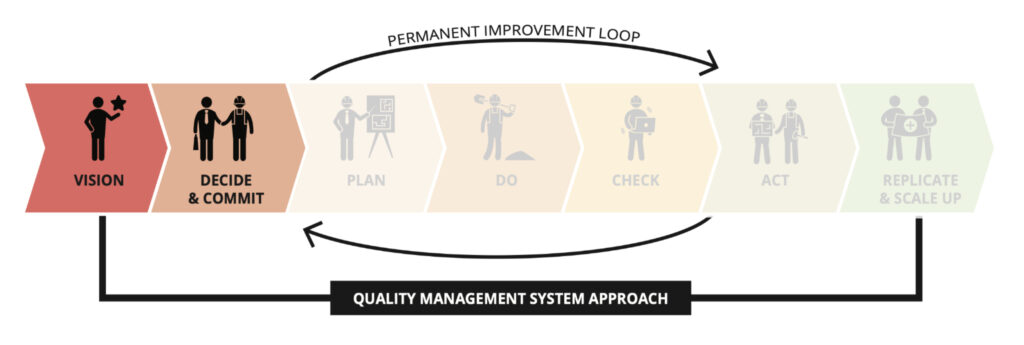NEB ambition
The ultimate ambition of the New European Bauhaus is to achieve transformation. To do this, the NEB Compass has identified specific levels of ambition that outline the desired outcomes for each of the NEB values.
The ultimate ambition of the New European Bauhaus is to achieve transformation. To do this, the NEB Compass has identified specific levels of ambition that outline the desired outcomes for each of the NEB values.
These areas refer to the five key domains of intervention that CrAFt's New European Bauhaus Impact Model considers essential for guiding and evaluating complex urban initiatives.
The participation level refers to the degree or extent to which individuals or groups are actively involved or engaged in a particular activity, project, or process. It assesses the depth of their involvement, contributions, and commitment, ranging from minimal or passive participation to active and dedicated participation.
The New European Bauhaus (NEB) aims to promote the values of sustainability, aesthetics, and inclusion in the design and transformation of urban spaces. It emphasises the integration of environmental, social, and economic considerations to create harmonious and innovative living environments.
According to the Smart City Guidance Package, there are seven stages to plan and implement smart city projects. These stages propose a logical and coherent roadmap for city initiatives involving many stakeholders.
CrAFt Cities Session 3 —16 February 2023— was a workshop to reflect on the previous two sessions.

Judith Borsboom (Locality) presented the Climate-Neutral and Smart Cities Guidance Package: New European Bauhaus Edition and explained in what manner the work that we are doing at the CrAFt Cities Sessions will inform this publication. She then introduced some of the ideas and reflections collected in previous sessions. Finally, Judith explained in detail how the first two stages, “Vision” and “Decide & Commit”, work, including the to-dos per stage, some of the tools that can be used during each stage, and the main outputs should be at the end of each stage.
In the second half of the session, the participants split into groups and discussed:
Regarding the first two steps —Vision and Commit & Decide— it stood out how challenging it is for the cities to effectively engage their stakeholders, particularly those from the private sector, due to in-force regulations for public tenders. To address the engagement issue, several cities are creating engagement platforms, and they would like to share their experiences and compare how they work in different socio-political contexts.
The participants also mentioned that the practical implementation of any plan tends to result in more chaos than initially expected. Certain dynamics are simply beyond our control. There are different approaches to this: some people embrace this chaos, while others would like to learn some tools to help them to ease the burden.
The discussion about the New European Bauhaus principles revolved around the fact that aesthetics and beauty are subjective. Therefore, different people and different contexts can interpret aesthetic matters differently. This variety of understanding of aesthetics may make integrating difficult when cities need a functional and quick-to-implement solution to address environmental sustainability.
Finally, the participants suggested that they would like to be presented with more practical examples of how cities implement the New European Bauhaus principle in their programmes and projects.